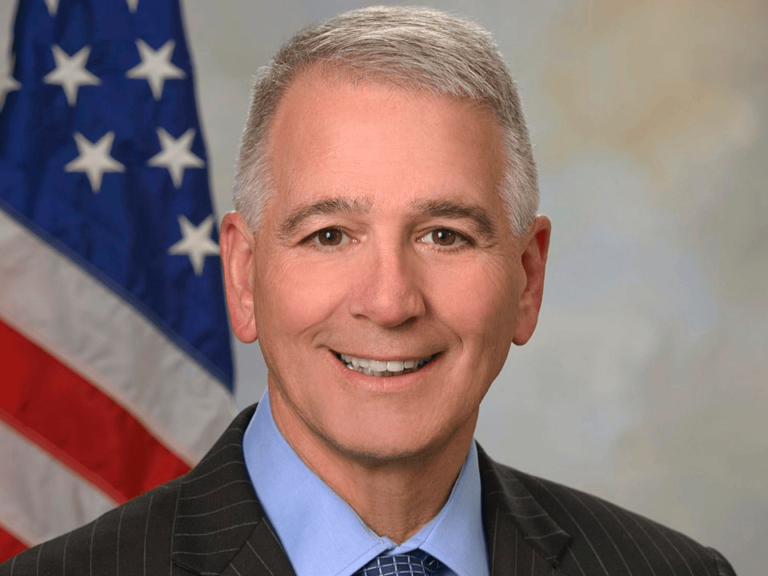Edward Sondik, an electrical engineer by training, followed a career path that led him to top public health positions.He was a director of the National Center for Health Statistics at CDC, an acting director of NCI, and a deputy director of the NCI Division of Cancer Prevention and Control.
Sondik died on June 25 after a brief illness. He was 82.


How does an electrical engineer become a public health leader at NCI and the CDC? In an oral history conducted by the NCI Division of Cancer Prevention Oral History Project in 2009, Sondik attributed his career direction to his graduate research focus on operations research and management science.
“I did my graduate work on the side of electrical engineering that doesn’t deal with resistors, wires, capacitors, and so forth, but is really on the control side, control system side, and it’s—actually was closer to operations research—or management science, really,” Sondik said.
Initially, he worked at what was then called the National Heart and Lung Institute.
“Around my fifth or [sixth] year, I heard that NCI was starting a biometrics and operations research branch.”
Sondik thought his expertise was the right fit for the fledgling division, back in 1990 (The Cancer Letter, Sept. 7, 1990).
“There was, of course, focus on the usual analytic sciences, epidemiology, demography and mammography to a degree. But I said, ‘Operations research is focused on decisionmaking.’ And I said, ‘That’s really quite crucial to health policy,’” Sondik said. “I said, ‘Well, whoever is talking about operations research at NIH is my kind of person,’ because there was no activity like that at that point at NIH.”
That person was Peter Greenwald, founding director of the Division Cancer Prevention and Control, now separated into the Division of Cancer Prevention and the Division of Cancer Control and Population Sciences.
“Peter Greenwald’s office, it turns out, was one floor, literally one floor below where I was located,” Sondik said. “I was on the fifth floor in Building 31A, and he was on the fourth floor in Building 31A. So, I went down and talked to him, and came to be the head of that new branch.”
Ed was a mentor to many, including me. He was a very disciplined, wise, quiet soul who supported many young scientists. Ed was very supportive of me, and wrote the letter that led to me receiving tenure at the NCI. I, like many, truly felt his support.
Otis Brawley
Greenwald remembers Sondik’s appearance in the office on the fourth floor.
“He came down right at an optimal time, and it was just what we needed, which was someone who really understood the various approaches to human clinical trials and also epidemiological approaches to studying cancer in people,” Greenwald said to The Cancer Letter. “He was a bit on the modest side—that is, he would wait and listen carefully, and he was very good at integrating the thoughts of the various participants and coming up with a succinct statement and understanding of what it was we were driving at. Then he helped improve upon the quality and the efficiency of the research we were doing.
“Edward Sondik was a wonderful scientist and friend,” Greenwald said. “He was highly respected by everyone at the National Cancer Institute when he was there as the deputy director of the Division of Cancer Prevention and Control, all of us will miss him.”
After Sondik left NCI for the National Center for Health Statistics, Barry Kramer filled the role of deputy director of Cancer Prevention and Control.
“I assumed his position after he left, which was an honor to me because he had big shoes to fill, and I thought that it was a highlight in my career that I would even be considered to take his position after he left.”
Kramer described Sondik as “someone everyone looked up to.”
“The best way of describing him—and I did have the privilege of working directly for him—is that he was really a true gentleman.” Kramer said to The Cancer Letter. “I think he was admired and loved by all of his staff and colleagues, but he also brought to the division of Cancer Prevention, a real careful, rigorous science, and he brought a very meticulous approach to analysis of cancer statistics and interpretation of cancer statistics.
“I also viewed him as just an outstanding advisor in my career as I was coming up, I was junior to him, and I think it was a game national for the National Center for Health Statistics, that he took a position heading NCHS there, but it was at the same time, a loss to the Division of Cancer Prevention.”
Sondik became the NCI acting director upon resignation of Samuel Broder (The Cancer Letter, Dec. 22, 1994; Jan. 27, 1995). Previously, Sondik had served as acting deputy director of NCI after Daniel Ihde left the institute (The Cancer Letter, March 4, 1994).
Sondik served as the NCI acting director for six months.
“He was, for a time, acting director of the National Cancer Institute, and he brought a steady hand at a difficult time,” Kramer said. “It was a time when fraud had been discovered in the oncology community, and he had such a level head. He was cool-headed, and so he was just the right person at the right time during that period of the National Cancer Institute.


“I thought he was the right man for every job that he held, although I was sorry to see him go to NCHS.”
Sondik left a lasting impression on those he worked with, Kramer said.
“No matter who you call, you’re going to hear nothing but an outpouring of love for Ed. He was just quite a good person. Just a good person,” Kramer said.
Otis Brawley, the Bloomberg Distinguished Professor of Oncology and Epidemiology at the Johns Hopkins University Sidney Kimmel Comprehensive Cancer Center, is one of Sondik’s many mentees.
“Ed Sondik was an engineer who led the National Cancer Program by applying engineering principles,” Brawley said to The Cancer Letter. “As acting director, he successfully led the NCI through turbulent times.
“Ed was a mentor to many, including me. He was a very disciplined, wise, quiet soul who supported many young scientists. Ed was very supportive of me, and wrote the letter that led to me receiving tenure at the NCI. I, like many, truly felt his support.”
Sondik is survived by his wife of 60 years, Elinor; son and daughter-in-law Robert and Joanna; daughter and son-in-law Karen and Seth; four grandchildren, Max, Adam, Noah, and Jacob; and sisters and brothers-in-law, Arlene and Dan Neiditz and Sheila Sondik and Paul Sarvasy.












